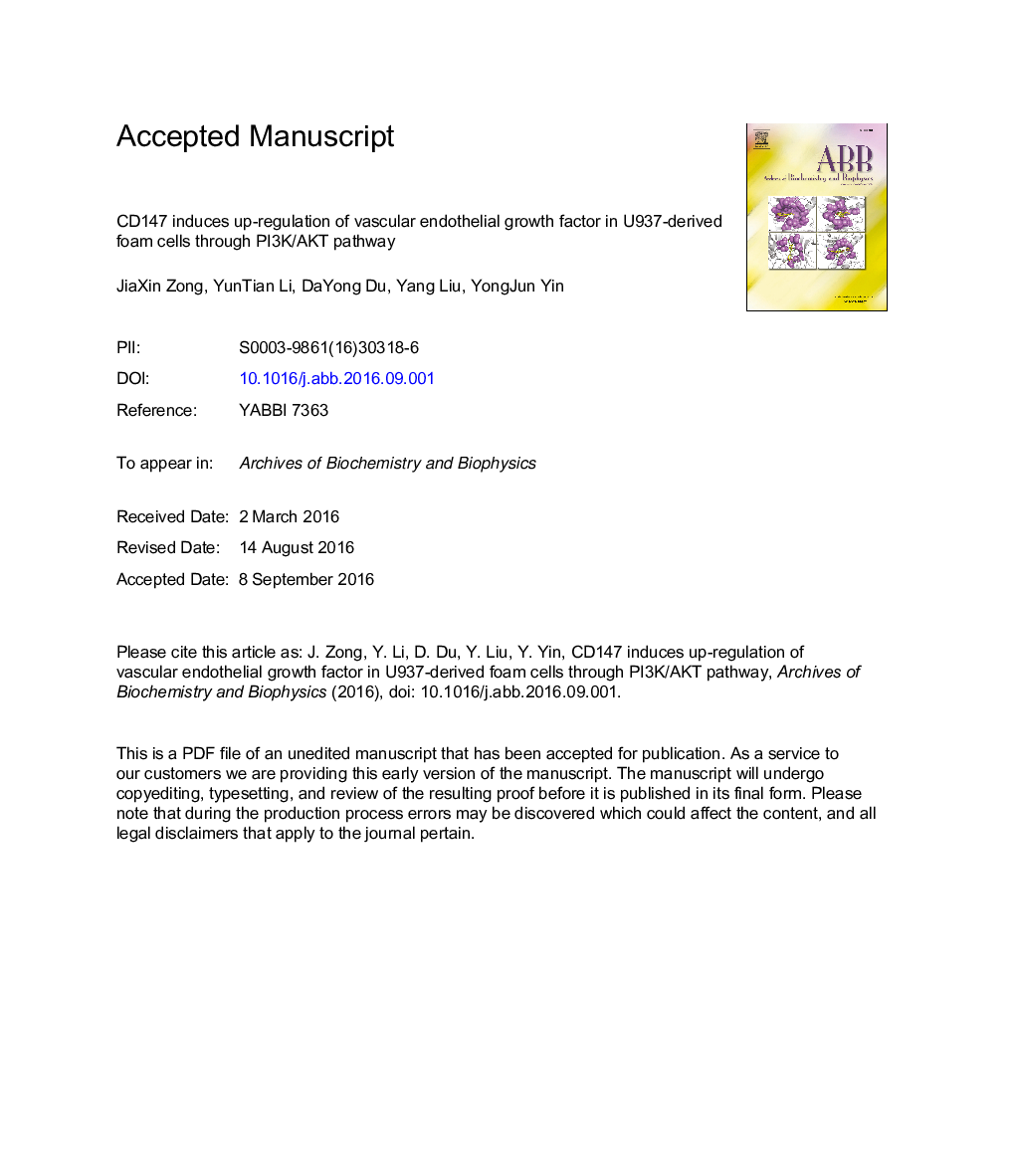| Article ID | Journal | Published Year | Pages | File Type |
|---|---|---|---|---|
| 5504518 | Archives of Biochemistry and Biophysics | 2016 | 19 Pages |
Abstract
Intraplaque angiogenesis has been recognized as an important risk factor for the rupture of advanced atherosclerotic plaques in recent years. CD147, also called Extracellular Matrix Metalloproteinase Inducer, has been found the ability to promote angiogenesis in many pathological conditions such as cancer diseases and rheumatoid arthritis via the up-regulation of vascular endothelial growth factor (VEGF), a critical mediator of angiogenesis. We investigated whether CD147 would also induce the up-regulation of VEGF in the foam cells formation process and explored the probable signaling pathway. The results showed the expression of CD147 and VEGF was significantly higher in U937-derived foam cells. After CD147 stealth siRNA transfection treatment, the production of VEGF was reduced depended on the inhibition efficiency of CD147 siRNAs.The special signaling pathway inhibitors LY294002, SP600125, SB203580 and U0126 were added to cultures respectively and the results showed LY294002 dose-dependently inhibited the expression of VEGF. The reduction of phospho-Akt was observed in both LY294002 and siRNA groups, suggested that the phosphatidylinositol 3-kinase/Akt pathway may be the probable signaling pathway underlying CD147 induced up-regulation of VEGF in U937-derived foam cells.
Keywords
Related Topics
Life Sciences
Biochemistry, Genetics and Molecular Biology
Biochemistry
Authors
JiaXin Zong, YunTian Li, DaYong Du, Yang Liu, YongJun Yin,
